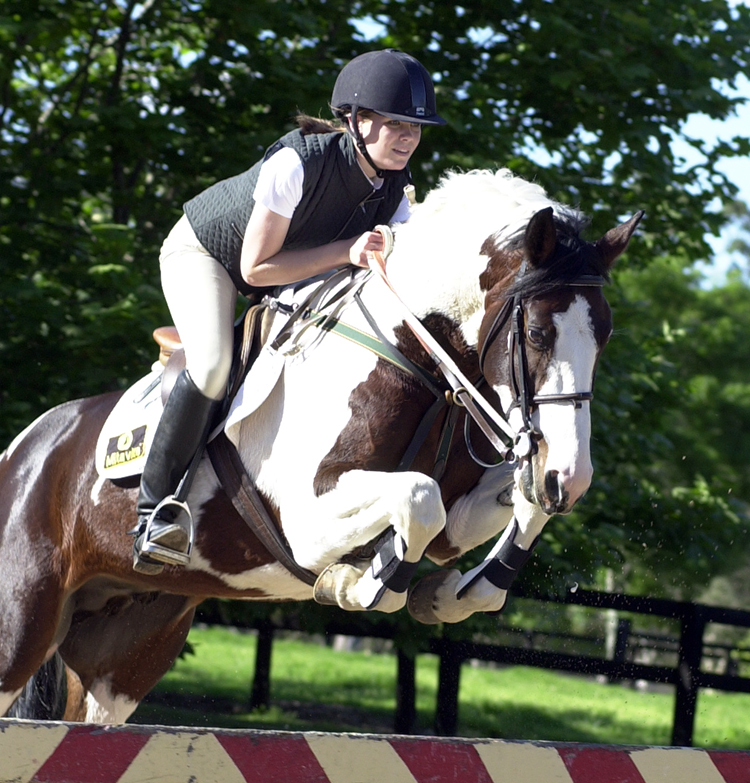 with guest star, Copabella Visage
with guest star, Copabella Visage
It was not so much a lesson, as every young rider’s fabulous dream. One day their parents go out and buy a new horse. A European bred jumping horse, selected by one of the world’s top riders and trainers, and they bring it back to Australia – and what is more, the horse is not only a fabulous jumper, he is the most amazing skewbald colour… just like a horse in a picture book.
Well that is more or less what happened to Julia Hargreaves. Of course, the stallion will be ridden in competition by the trainer, Vicki Roycroft, but every now and then, Julie gets to enjoy the ride – like she is today, and she is discovering that he is not only flash over a fence, but he can move like a dressage horse. This Julia should know, since she has not only ridden jumpers, she has also competed to Prix St Georges level on her mum Lesley’s dressage horse.
Still Vicki Roycroft is not one to let her pupils run away with the idea that the road to excellence is an easy one: “Don’t just sit there like a princess, you have to ride him!”
But it was more of a fun session than a hard working lesson. For one thing, Visage was just back from a heavy semen collection at Agnes Banks, and he is not long in work anyway, he is only five…
“He’s pretty awesome. I haven’t ridden him much. That’s only the second time I’ve ridden him,” Julia tells me later. “When we took him to the NSW State Showjumping Championships and Vicki rode him in the D grade, everyone stopped what they were doing to watch him. He is pretty amazing.”
“He’s beautiful to ride, I’m not quite skillful enough to ride him over fences yet.”
Julia lived in America for five years, before moving back to Australia five years ago, and while in the States she took part in that uniquely American jumping experience – Show Hunter and Equitation.
“It’s very different to the way they do things in Australia. It probably helped my position a lot, and since they put you on ponies that were pretty well schooled, then you got your confidence. It is very helpful when you are starting out.”
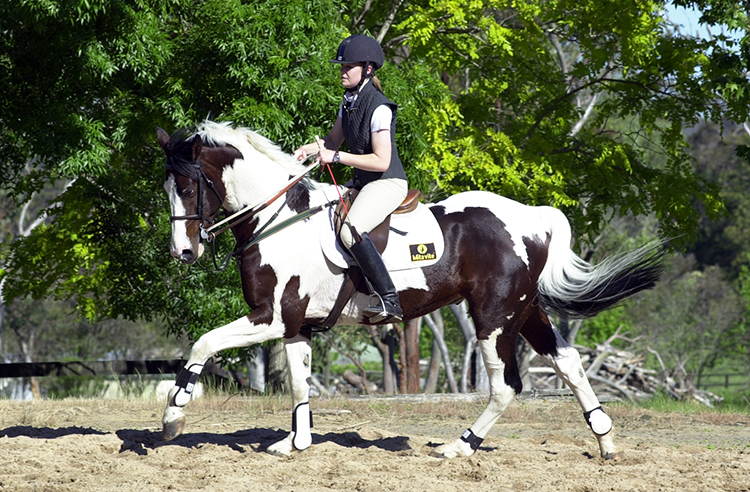
Julia started riding with Vicki Roycroft about a year ago, with Monty, a ‘tricky’ Thoroughbred.
“My god-mother, Rona is a good friend of Vicki. I went to a big show, and didn’t do very well, and she got me to bring my horse out here to train with Vicki. Vicki got me riding the grey mare Snowshoes, for the last two months, and she has been really good for me.”
What are your ambitions – to ride for Australia on your pretty coloured stallion?
Julia laughs, ‘I think Vicki should do that. I haven’t set any high goals because I don’t know what I am capable of. I am aiming to stay with Vicki for as long as I can because she is a great instructor. I didn’t really have goals until I started riding with Vicki, she has influenced me a lot.”
And why jumping, not dressage or eventing?
“I evented for a while, not long. I went to a boarding school where you can take your horse and I did everything while I was there. I was doing jumping and dressage on my Mum’s horse, Prix St Georges and Inter I, but at the same time I was riding with Vicki, and jumping is more exciting and I like the people and the horses in show jumping more.”
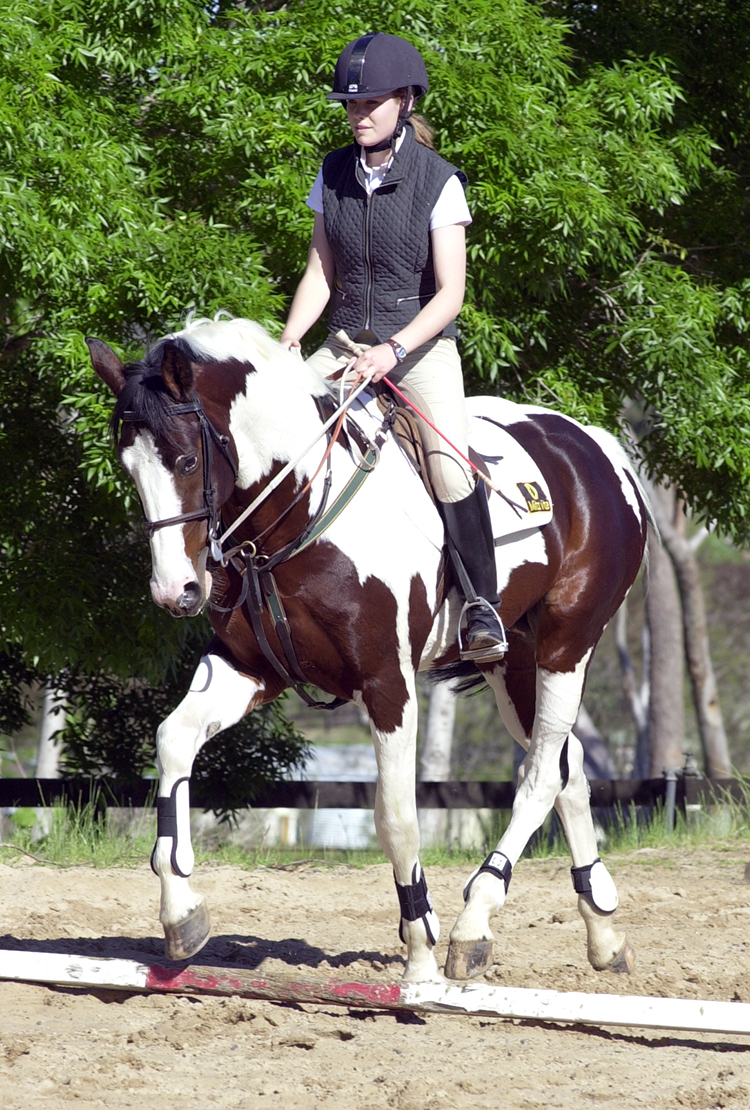
For Vicki, with a brief to find a well bred jumping stallion that could go on and be a top competitor, Visage was the perfect candidate, except, perhaps, for his unusual colour:
“It was a tough enough task, and I’d looked at a few before we found this one. I rang back to Australia and said, I think we’ve found one, he’s a lovely horse, he’s an approved stallion, he jumps very well, he seems very quiet, but there is only one eensy weensy thing you might not like about him, Lesley said ‘what’s that?’ “He’s a Pinto.” There was silence at the end of the phone. From France to Australia, ten seconds. ‘He’s what?’ “He’s a Pinto but he is a glorious type. If he was a solid colour you would swear he was a Thoroughbred or a modern Sporthorse. She went ‘oh, do you think we could see a video?’ They saw the video and said, he looks pretty nice, if you think he is alright, we’ll trust you on this one.”
“Then when we went out to pick him up at the Quarantine station, and Lesley came with me, and I’m thinking, ‘I’ve only seen him once … Was he big? I think he was big. I know I like smaller horses, so I was panicking a bit. When they led him out of the stables, as he got closer – relief – he’s big and he is lovely. And the Hargreaves just fell in love with him.”
And you don‘t make a habit of giving 17-year-olds lessons on recently imported stallions?
“It’s just his temperament, it is so outstanding. He has been out to his first show. He stayed in a yard all weekend, which horrified Lesley because she comes from a dressage background where everything is wrapped up in cotton wool, and here was her precious stallion out in a yard. We did keep an eye on him, because he had jumped out of the quarantine yard at Eastern Creek. His behaviour all weekend was impeccable, and he was second in his first D grade out of 90 horses. Straight after that he went off for a weeks collecting for frozen semen, and when he came back, he hadn’t changed one iota in his temperament. For me it is a good idea for Julia to ride a bunch of different horses, and why shouldn’t she ride one they own – under supervision, and the horse is a gem.”
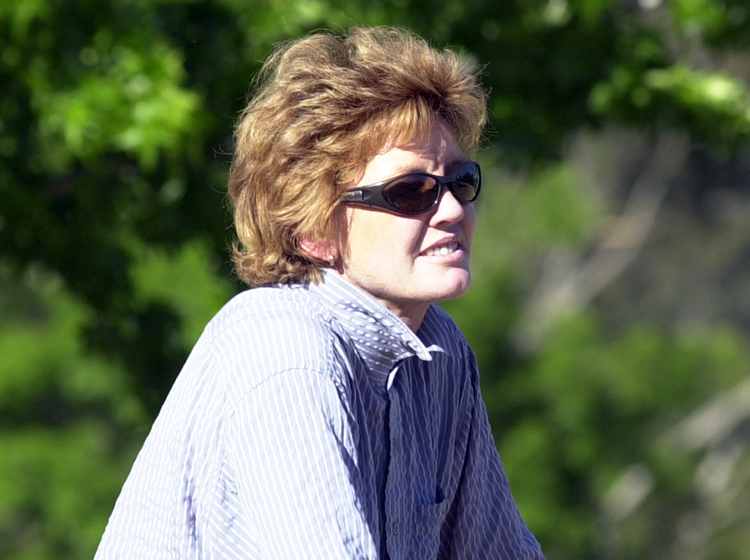
She looked very stylish on the flat with him?
“This is the nice thing about teaching a rider like her. She comes from a dressage background so she has an idea of the basics of riding in balance. It’s a funny thing – for me, most of the dressage riders don’t ride forward enough, but I guess that is what all the dressage instructors say. She also did a bit of equitation when she was young, and that developed her feel, and since they have been in Australia, she has done quite a lot of work with Carolyn Lieutenant. It certainly makes it easier to work with a trainable rider.”
“However she hasn’t done a lot of jumping and the horse she had before was unsuitable because he was a little too careful and tricky for her, and she lost a bit of confidence on him, that’s why we’ve had her riding Snowshoes, that’s a horse to give her confidence, she doesn’t have to think too much about being absolutely correct. The other horse unless you rode him perfectly he would refuse. It is nice that she has had something that she can just canter in, and if the distance isn’t perfect, the horse is still going to jump.”
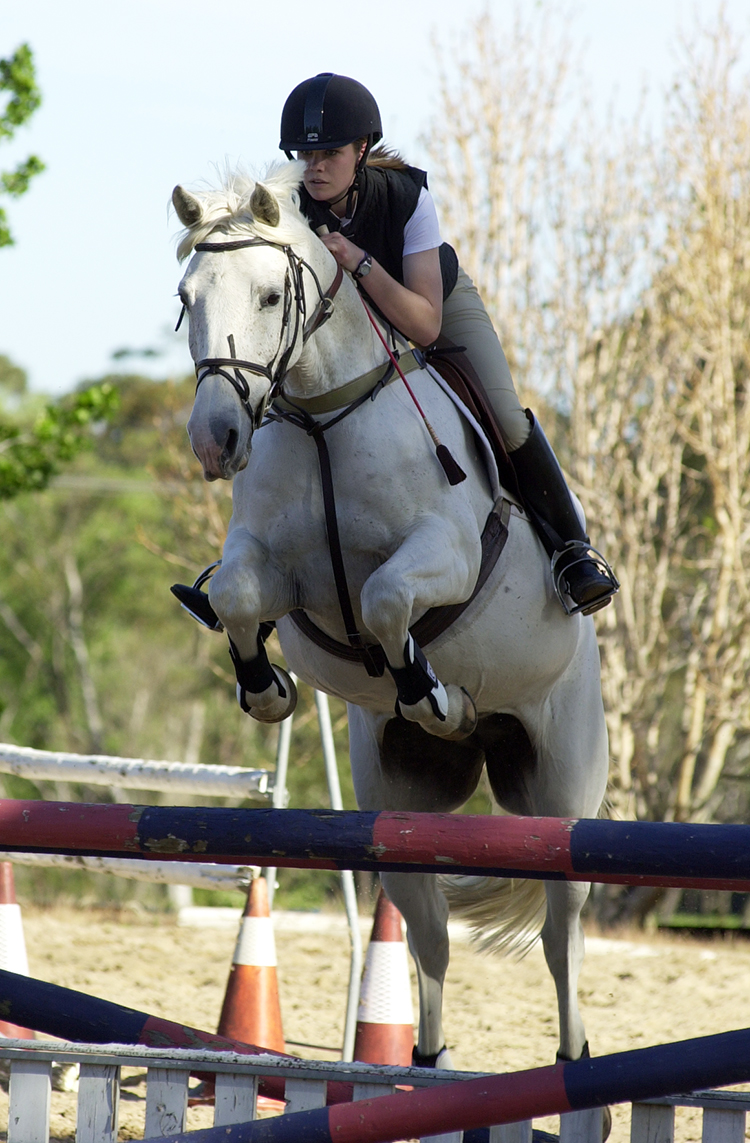
Julia and Snowshoes
“I didn’t want to be too tough on her today, because that was only her second ride so I didn’t want to fill her head with too much technical stuff, it was really more getting the feel of him, and enjoying it. She has to enjoy the sport so she wants to stay with it. She was a little in awe of riding this fancy new horse, and having an audience didn’t help.”
“I wanted her to feel the differences and the similarities between him and little Snowshoes. He’s young, and a little slow thinking and has to be balanced, you have to create his balance whereas the mare has more of a natural balance because she is better educated. He has got a lovely mind and he is obliging, but still he is a five year old horse who needs to be told, educated and established.”
Is it hard finding horses for riders like Julia, you must have been through it all before finding horses for Michelle Barrera?
“There’s not so many of them here, and we have all taken to going shopping in Europe. We are looking for a horse for Julia now, and I think there are enough here in Australia. Okay in Europe, the horses are cheap at the moment but you still have to pay to bring them home, and you worry if you know their history well enough. I’m lucky I’ve got contacts that I can trust, I have been lucky with the horses I’ve brought out so far but I work with people I trust. The problem is getting them suitable and sound enough, and it is hard finding them sound enough in Australia. You have to find people who are switched on enough to know that you don’t run them on concrete, and there are too many grounds like concrete in Australia.”
“At the moment I’ve got a couple of horses in mind that will take Julia through young riders and maybe into her first World Cups. For Michelle, Coalminer was the perfect horse. We seriously considered Coalminer for Julia because he is sound and well, but he had such a good finish at Sydney – leading jumping horse, won three classes, almost won the Australian championship, if they’d run it on the normal format over three classes he would have won by a mile. It was a pretty perfect final show, but I worried he wouldn’t cope with retirement, that he would fuss and fret and run the fence and not be happy. But he has proven me wrong, he is having a ball, but he is driving the other two pensioners – True Colours and Apache – crazy. Coalminer is only 22, the others are 25 and 26 and he runs around wanting them to play and he teases them… He’s fat and happy so he can stay there.”
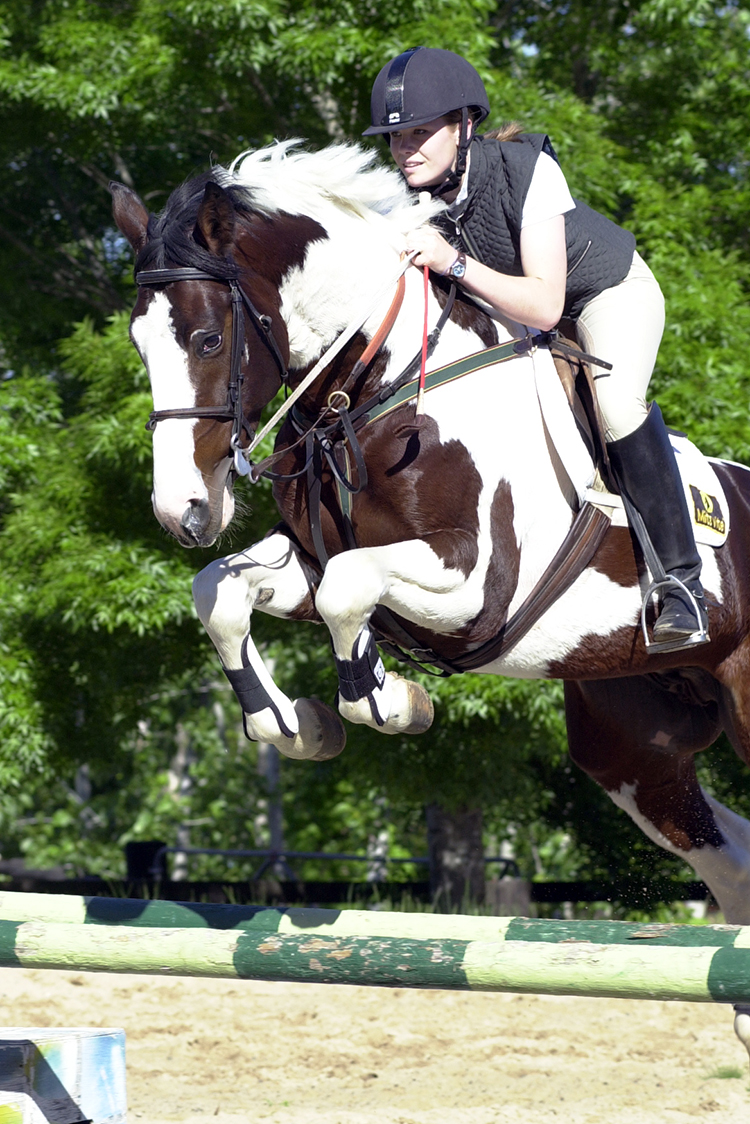
Is there are line between giving a young rider something so push button that they don’t do anything, and over facing them with a horse that is too difficult?
“Sure. It is hard to find the perfect horse. We persisted for quite a while with the horse Julia had but the problem was she had to give him such a perfect ride; it was discouraging her from the sport. It was affecting her riding and that wasn’t surprising because sometimes when I rode him, he wouldn’t operate, and I’ve been doing the job for 40 years! He wasn’t the horse for her, and maybe the grey mare is a little too push button, but she is what she needs right now. I don’t like to put any kids on totally push button horses. Coalminer is not push button, he still has to be ridden and if you miss him too many times, he’ll stop. He was wonderful for Michelle and we are looking for a horse like that for Julia, a horse with enough scope to cope with distances that are less than perfect, and that is going to leave the ground when things aren’t exactly right.”
You’ve taught the elite riders of our eventer squad, is it different teaching young riders?
“I don’t really care, my common denominator is that they want to do it. I love teaching the eventing guys because not only do they want to do it, but also they are extremely talented. Someone like Julia is a lot of fun because she has a very good attitude, she is committed and that is nice. It’s a funny game teaching, I remember George Morris saying talent is a dime a dozen, but the right attitude is difficult to find. But you can promote that attitude and that is where finding the right horse is so important.”

How often do you want to work with a young rider?
“I teach Julia about twice a week. She’s pretty au fait with our routine, it is just a matter of reminding her of things. In the end it becomes more detail, there is nothing radical that you have to work on.”
Are there good competition opportunities for young jumping riders in Australia?
“I’ve never been a great supporter of young rider classes although I am changing my thinking marginally. The problem with young rider classes is, if kids win too much when they are young, when they hit the next level, and they are not winning so much, they think, ‘this is no fun any more’ and they don’t want to do it.
When you look at the list of top riders in Australia now, none of them were great shakes as juniors. I think it was only Colleen Brook who was an outstanding rider as a junior and went on. There were a bunch of others who were great juniors but where the hell are they today? I don’t think you should cater too much for young riders, they’ve got to learn how to fight for it. I only ever won one junior class in my life at a Royal. At my last Sydney Show as a junior, I won a class! It was like I’d won a Gold Medal at the Olympics! I think it would have been different if I’d won a lot as a junior, then got to seniors and found it hard to get a ribbon. I wasn’t very good at winning even when I got to senior classes. It was only when I hooked up with Wayne that I learnt how to ride and win.”
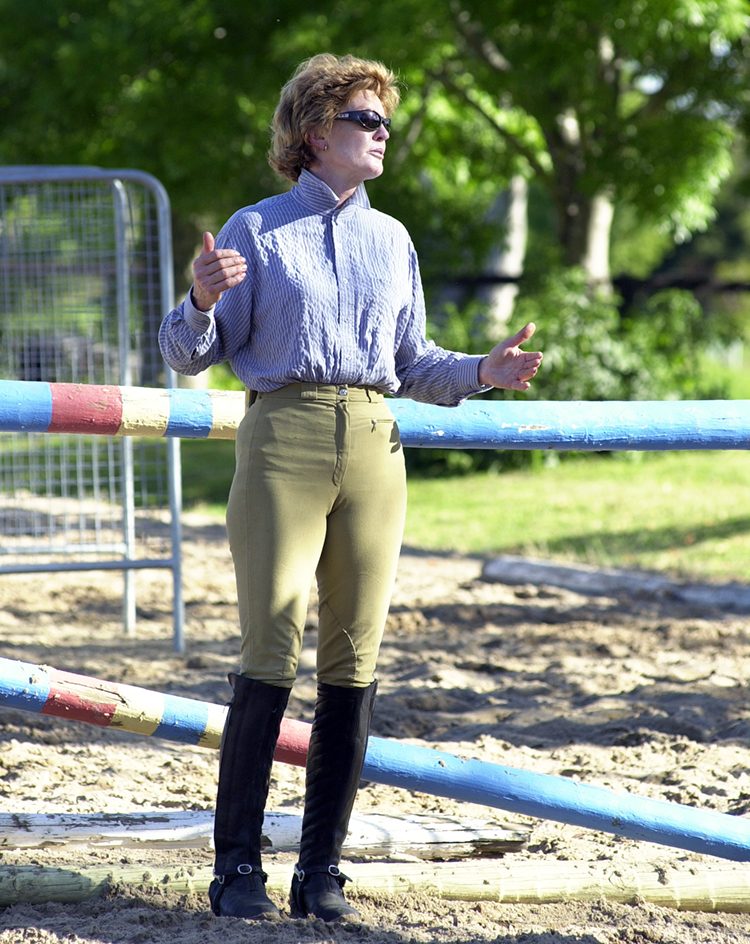
Is there a program for teaching younger riders?
“I take them as individuals, there is no specific thing. It goes back to any rider – teaching them that the legs are the most important things when it comes to communicating with the horse. That’s what no one understands. Okay it is a little bit easier now because we’ve got more Warmbloods but in the old days when everyone rode Thoroughbreds, it was very hard for them to understand – the importance of your legs.”
“They were sitting on hot horses, and those hot horses spend their entire time trying to stop you using your legs. You get some of these silly dressage queens who tell riders that the seat is the most important thing – so you’ve got these riders bouncing up and down on their horses’ backs, creating these horrid running ghastly things because they are not prepared to touch them with their legs. The horse must accept your leg even if it is a hot Thoroughbred. No question. That is your main form of communication.”
“You put even a hot Thoroughbred on a circle, and you teach it about inside leg, because that is easier for them to understand. At first they are going to spin around and go sideways, and okay the leg is going to stay there, it is not going to go away, and I am going to keep you on a circle so it will be harder for you to totally spin out. If they are going to totally spin out and run through the fence – give up. There are some horses that are so hot that they are never going to accept the leg at any level.”
“I just start them on the circle and eventually they accept your inside leg, because the horse will always take the easy way out, and if your leg is not going to go away, it is going to stay there – not an aggressive leg, just a leg that stays there, and when you put a little more pressure on, the horse has to move away from it. Once the hot horse accepts the leg he is fine. The difficulty in this country in the old days was to get the Thoroughbred to accept the leg, but once they accept it, then half the time, they are looking for it. They want it, it makes them feel comfortable and secure.”
“The horse has to be waiting, saying ‘what would you like me to do?’ Not I’m going to do my own thing, or what do you want me to do. The horse waits for what you tell it to do. The horse should go forward and straight and take you somewhere. It’s like Julia and the grey mare, the horse is a little soft in the mouth and she would rather go with no contact and you have to actually work her a bit to get the connection. But once you work her through that, push her through the barrier, she is fine. The attitude of the horse should be forward and straight until you tell it otherwise… ”
It seems to me that there is a new buzz around the showjumping scene right now, and it will be attractive, different, horses like Visage who can build the momentum, and provide an attractive competition scene for talented riders, like Julia – and her mentor, Vicki Roycroft.
This article first appeared in the December 2003 issue of THM.
